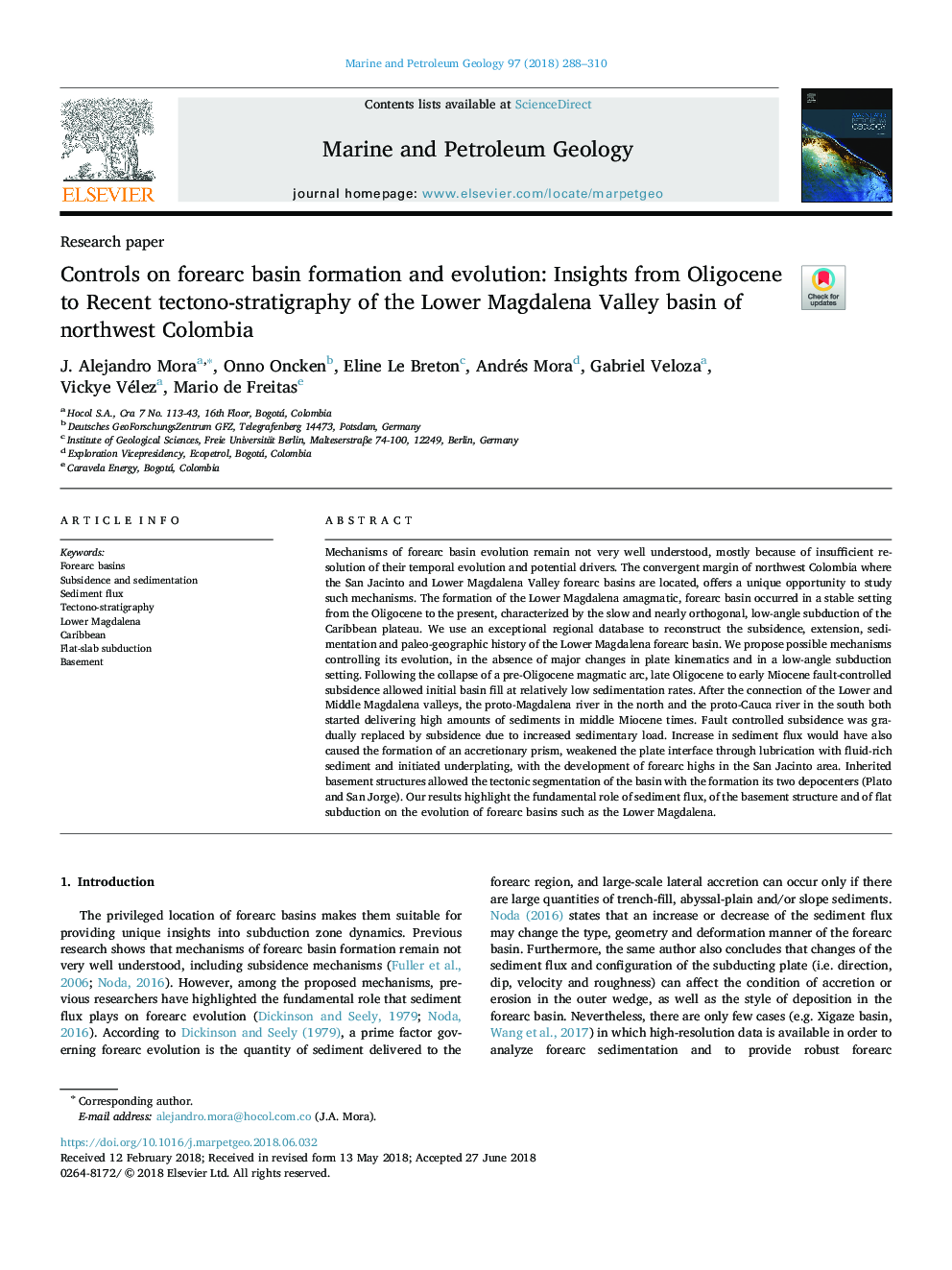| کد مقاله | کد نشریه | سال انتشار | مقاله انگلیسی | نسخه تمام متن |
|---|---|---|---|---|
| 8908967 | 1637128 | 2018 | 23 صفحه PDF | دانلود رایگان |
عنوان انگلیسی مقاله ISI
Controls on forearc basin formation and evolution: Insights from Oligocene to Recent tectono-stratigraphy of the Lower Magdalena Valley basin of northwest Colombia
ترجمه فارسی عنوان
کنترل بر شکل گیری و تکامل حوضه پیشین: بینش از الیگوسن تا تکتونو-چینه شناسی اخیر حوضه دره ماگدالنا در شمال غربی کلمبیا
دانلود مقاله + سفارش ترجمه
دانلود مقاله ISI انگلیسی
رایگان برای ایرانیان
کلمات کلیدی
موضوعات مرتبط
مهندسی و علوم پایه
علوم زمین و سیارات
زمین شناسی اقتصادی
چکیده انگلیسی
Mechanisms of forearc basin evolution remain not very well understood, mostly because of insufficient resolution of their temporal evolution and potential drivers. The convergent margin of northwest Colombia where the San Jacinto and Lower Magdalena Valley forearc basins are located, offers a unique opportunity to study such mechanisms. The formation of the Lower Magdalena amagmatic, forearc basin occurred in a stable setting from the Oligocene to the present, characterized by the slow and nearly orthogonal, low-angle subduction of the Caribbean plateau. We use an exceptional regional database to reconstruct the subsidence, extension, sedimentation and paleo-geographic history of the Lower Magdalena forearc basin. We propose possible mechanisms controlling its evolution, in the absence of major changes in plate kinematics and in a low-angle subduction setting. Following the collapse of a pre-Oligocene magmatic arc, late Oligocene to early Miocene fault-controlled subsidence allowed initial basin fill at relatively low sedimentation rates. After the connection of the Lower and Middle Magdalena valleys, the proto-Magdalena river in the north and the proto-Cauca river in the south both started delivering high amounts of sediments in middle Miocene times. Fault controlled subsidence was gradually replaced by subsidence due to increased sedimentary load. Increase in sediment flux would have also caused the formation of an accretionary prism, weakened the plate interface through lubrication with fluid-rich sediment and initiated underplating, with the development of forearc highs in the San Jacinto area. Inherited basement structures allowed the tectonic segmentation of the basin with the formation its two depocenters (Plato and San Jorge). Our results highlight the fundamental role of sediment flux, of the basement structure and of flat subduction on the evolution of forearc basins such as the Lower Magdalena.
ناشر
Database: Elsevier - ScienceDirect (ساینس دایرکت)
Journal: Marine and Petroleum Geology - Volume 97, November 2018, Pages 288-310
Journal: Marine and Petroleum Geology - Volume 97, November 2018, Pages 288-310
نویسندگان
J. Alejandro Mora, Onno Oncken, Eline Le Breton, Andrés Mora, Gabriel Veloza, Vickye Vélez, Mario de Freitas,
